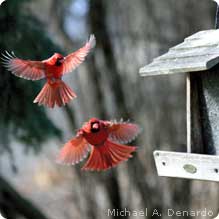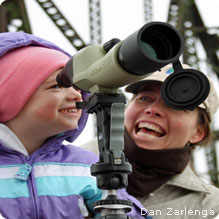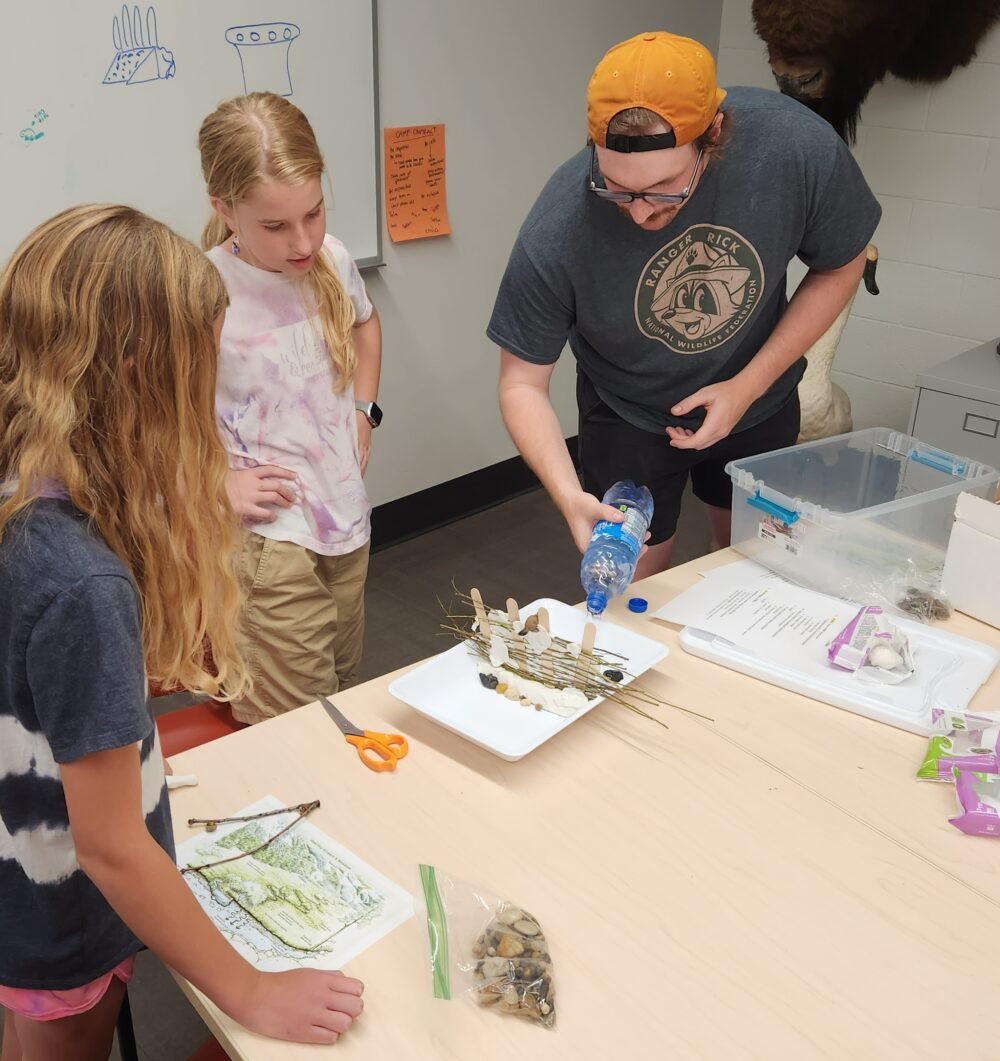We have much more to do and your continued support is needed now more than ever.
Backyard Birding Tips For Beginners
 Looking for a splash of color in your gray winter day? It just might arrive on wings. Bright-red cardinals, blue jays, goldfinches, black-capped chickadees—no matter which cheerful chirpers call your region home, they’re sure to brighten up your view. And whether you’re a beginning birder or an expert ornithologist, you can make birdwatching into a kid-friendly sport.
Looking for a splash of color in your gray winter day? It just might arrive on wings. Bright-red cardinals, blue jays, goldfinches, black-capped chickadees—no matter which cheerful chirpers call your region home, they’re sure to brighten up your view. And whether you’re a beginning birder or an expert ornithologist, you can make birdwatching into a kid-friendly sport.
Here’s how to get started:
Tempt with Treats.
Hang a birdfeeder in easy view of a window. Watch as birds visit throughout the day and ask questions to hone kids’ observation skills. “What different colors or patterns can you see that bird?” “Does it have a short, thick bill or a long, pointy one?” “Does it look the same as the bird over on the tree?” Keep an eye out when you’re away from home, too. Challenge kids to spot birds on trips to and from school, while running errands, or on a visit to a natural area.
Zoom In.
If you have a pair of binoculars, set them by the birdwatching window and demonstrate how to use them for a close-up view of the feeder. Or let the youngest kids spy on birds through pretend binoculars made from two taped-together cardboard tubes.
Hide Out.
For a bigger thrill, set out a super-sized cardboard box near the feeder and cut some peepholes in it – it’s a homemade bird blind. Sprinkle seeds on top and all around. Your kids will love hiding inside the blind to see which feathered friends come close.
 Take Names.
Take Names.
As excitement builds, try adding two more items to your birdwatching gear: a field guide and a blank notebook. Help kids use the photos and descriptions in the field guide to identify the most common birds you see. You can also consult Cornell’s All About Birds online field guide. Turn the notebook into a “Bird Journal” and encourage the whole family to add drawings and notes about the goings-on at the feeder.
Play Bingo.
Make bingo cards by drawing a grid on a sheet of paper. Fill in the squares with the names or pictures of the birds you see most often at your feeder, with a “freebie” square in the center. Challenge kids to mark off the birds as they spot them. See who can get a winning streak first when a feeding flock arrives.
Get Counting!
With some “training” under your belt, you’re now ready for the big game. The Great Backyard Bird Count, that is! It’s an annual event led by the Cornell Lab of Ornithology and the National Audubon Society. On February 18-21, 2011, birdwatchers of all ages will count birds and pool their results with others from across the continent.
It’s free, fun, and easy. You can count for as little as 15 minutes or as long as you like, and you can do it in your backyard or at a park, a nature center, a school, or anywhere else you enjoy birding.
It works like this: You tally the highest number of each species you see together at one time. Then you go online to report your numbers. (If you can’t identify a bird, don’t worry—you don’t have to report it.) You can see what others are reporting and how this year’s numbers compare to previous years. And if you snap some photos while you’re out, you can submit them to the online gallery and photo contest.
It’s a fun way to put your birdwatching skills to work, and it benefits birds, too. Scientists can’t be everywhere at once. But with people reporting from all over, they can piece together a picture of bird populations on a large scale and even get answers to some important conservation questions.
Want to try it? You’ll find all the details about participating here, including the option to print a checklist for your region that you can use to brush up on your IDs. There are even activities just for kids. A little birdie told me you’ll be glad you joined the fun!
For more information about birds, visit www.nwf.org/birds.





















